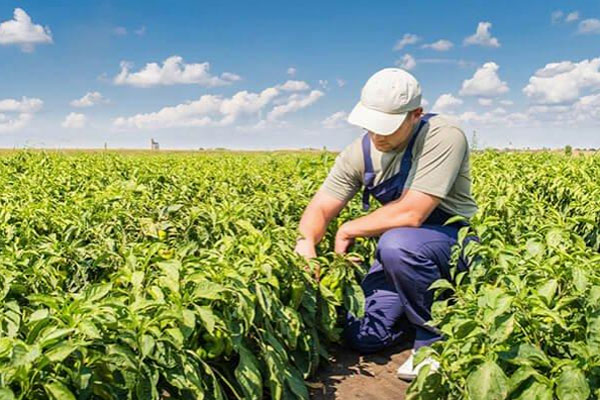History of The Soybean and How It’s Affecting Our Food
Soybeans are often called the miracle crop because of their great nutritional value. They provide vegetable protein and oil, and can be grown in a wider variety of soil and climatic conditions than any other major world crop.
The green soybean plant is a legume that is related to peas, peanuts and alfalfa, and is included in the category of oilseed. Soybeans are the third most valuable crop in the world, and the number one in versatility.
The green soybean plant is a legume that is related to peas, peanuts and alfalfa, and is included in the category of oilseed. Soybeans are the third most valuable crop in the world, and the number one in versatility.
History of Soybeans
Soybeans originated from China. Soybeans with four other plants (rice, wheat, barley, and millet) were named sacred by Emperor Shen-Neng of China in 2853 BC.
It was between 11th and 17th century BC that soybean plants were cultivated into a food crop in eastern China.
Soybeans spread to other countries such as Japan, Indonesia, the Philippines, Vietnam, Thailand, Malaysia, Burma, Nepal and India via the establishment of sea and land routes in the first century AC to the Age of Discovery.
In the early 1800’s, the first soybean arrived in America aboard a ship. But it was not until 1879 that farmers in the United States of America started planting soybeans. Soybean plants flourished thanks to the hot and humid summer weather conditions in the United States.
During World War II, the US government raised soybean popularity. They asked farmers to grow more soybeans to help feed wartime America and its allies. During this time, the US production of the miracle crop tripled.
It was between 11th and 17th century BC that soybean plants were cultivated into a food crop in eastern China.
Soybeans spread to other countries such as Japan, Indonesia, the Philippines, Vietnam, Thailand, Malaysia, Burma, Nepal and India via the establishment of sea and land routes in the first century AC to the Age of Discovery.
In the early 1800’s, the first soybean arrived in America aboard a ship. But it was not until 1879 that farmers in the United States of America started planting soybeans. Soybean plants flourished thanks to the hot and humid summer weather conditions in the United States.
During World War II, the US government raised soybean popularity. They asked farmers to grow more soybeans to help feed wartime America and its allies. During this time, the US production of the miracle crop tripled.
And while the soybean has been consumed for centuries in many countries, it was not until the 1960s that it began to emerge as a common food source.
Now the market for soybeans has gone global. The soybean processing industry has arisen throughout Asia and has spread to the Middle East, North Africa and throughout America. Without a doubt, the use of soybean products has continued to expand worldwide, especially in the vegan cuisines.
Soybeans are now more popular than ever, thanks to their versatility as a food. The nutritional value offered by soybeans is great because they contain fibre, zinc, iron, protein, calcium, and they are low in saturated fat besides having zero cholesterol.
Now the market for soybeans has gone global. The soybean processing industry has arisen throughout Asia and has spread to the Middle East, North Africa and throughout America. Without a doubt, the use of soybean products has continued to expand worldwide, especially in the vegan cuisines.
Soybeans are now more popular than ever, thanks to their versatility as a food. The nutritional value offered by soybeans is great because they contain fibre, zinc, iron, protein, calcium, and they are low in saturated fat besides having zero cholesterol.


Facts About Soybeans
Soybeans are a type of legume that can be eaten whole or processed. Many vegan foods are made of soybeans. Whole soy products are the least processed and that include soybeans and immature green soybeans, also known as edamame.
Soybean products can easily replace meat as a protein source. In fact, one cup (172 grams) of soy provides 29 grams of protein, which is of great nutritional value.
If you are a vegetarian in Malaysia, go for soybean food products such as Plant-based Crispy Fried Chicken, Plant-based Teriyaki Unagi, Plant-based Tomato Mushroom Meatball or Plant-based Sweet & Sour Meat to replace animal protein.
Soybean products can easily replace meat as a protein source. In fact, one cup (172 grams) of soy provides 29 grams of protein, which is of great nutritional value.
If you are a vegetarian in Malaysia, go for soybean food products such as Plant-based Crispy Fried Chicken, Plant-based Teriyaki Unagi, Plant-based Tomato Mushroom Meatball or Plant-based Sweet & Sour Meat to replace animal protein.
Soy Supplements
You may also find soy protein isolate in many protein powders, protein bars and shakes.
In a Nutshell
Soybeans offer several benefits, such as improving cholesterol level, fertility outcomes and menopause symptoms, so feel free to eat whole or fermented soy foods.
Moreover, soybeans reduce health risks because they contain good fat and they are a great source of Isoflavones. Studies have shown that Isoflavones lower the risk of breast and endometrial cancer.
The best way to find soy products is through plant-based food suppliers or manufacturers in Malaysia such as Hoshay Food Sdn Bhd. In Malaysia, you can easily find frozen plant-based food that is delicious, healthy and convenient, so there are no excuses not to include soy in your diet.
Remember soybeans help you stay healthy, vibrant and happy.
Let’s plant our inner warrior today!
Moreover, soybeans reduce health risks because they contain good fat and they are a great source of Isoflavones. Studies have shown that Isoflavones lower the risk of breast and endometrial cancer.
The best way to find soy products is through plant-based food suppliers or manufacturers in Malaysia such as Hoshay Food Sdn Bhd. In Malaysia, you can easily find frozen plant-based food that is delicious, healthy and convenient, so there are no excuses not to include soy in your diet.
Remember soybeans help you stay healthy, vibrant and happy.
Let’s plant our inner warrior today!


